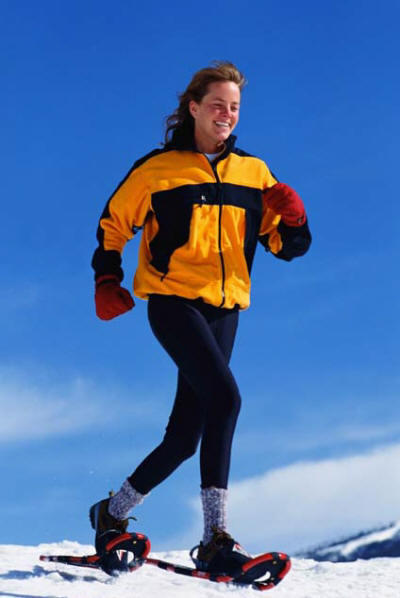Snowshoeing for Winter Fitness
Looking to move more? Consider snowshoeing. Currently more than 1 million people snowshoe (a 60 percent increase in the last decade) – not a huge surprise when you consider that it’s a sport with practically no learning curve. What’s more, if you’re a veteran walker, it’s a great way to maintain your outdoor routine in the snowy months. Snowshoeing is a great total-body workout because using poles and wearing snowshoes force you to life your arms and legs higher than you would when walking.

Another Bonus? You’ll burn 40 percent more calories when snowshoeing than you would walking.
How they work?
Snowshoes act as a flotation device to help you walk or glide over snow. The shoes increase the area over which your weight is distributed so that your feet don’t sink into the snow. Just strap on a pair and walk on trails, in parks, or even down a snow-covered street. One rule of thumb: Snow must be at least 4 inches deep. Also, if you’re a beginner, use poles for help balancing as you walk.
What you need
1. Snowshoes Choose a women’s mode – the shoes are lightweight and built to accommodate a shorter walking stride. Prices start at $100
2. Poles
Snowshoe poles reduce wear and tear on the knees by distributing your weight to the upper body. Adjust the poles (all are adjustable) so that arms are bent 90 degrees on flat terrain. Prices start at $30.
Walkers, take note
Snowshoeing improves your coordination, balance, and endurance, so you’ll become a more fit walker. Here’s what you’ll do:
• Strengthen your entire body, thereby boosting energy and endurance
• Tone your hip flexors, thigh muscles, and butt, thanks to the lifting motion involved in taking each step
• Build arm strength as a result of the swaying you’ll do to propel yourself forward

